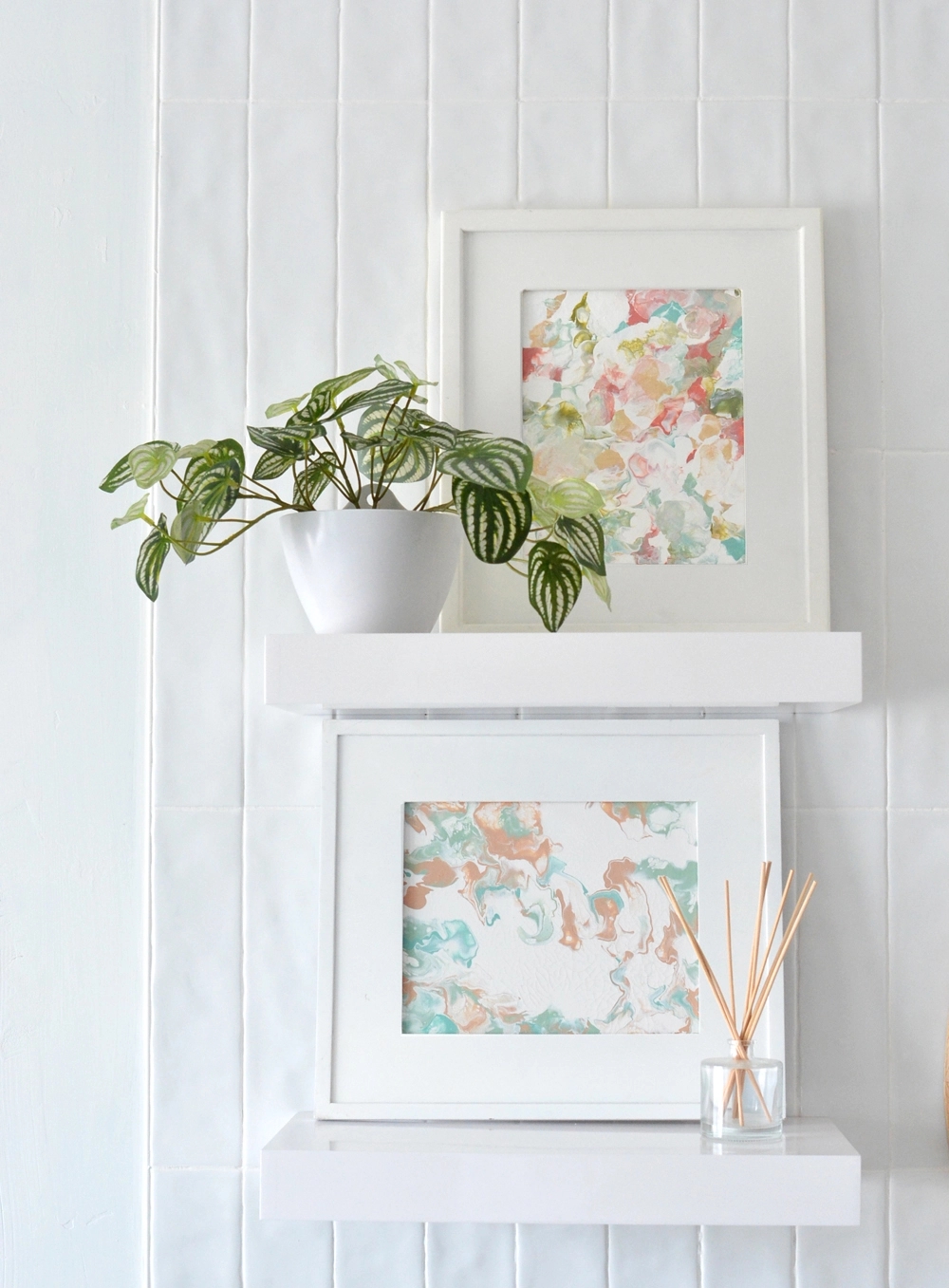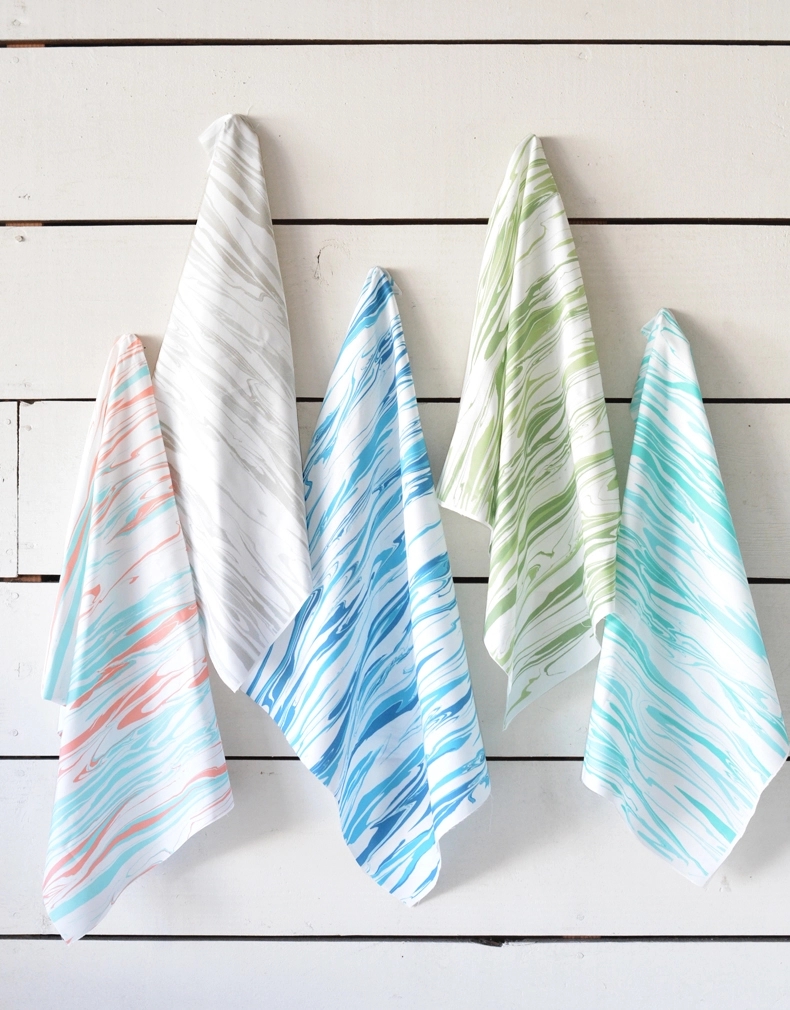
I am constantly inspired by fellow artists’ creation of abstracts, so I decided to experiment with different techniques myself. Abstract swirl paintings are a form of fluid art similar to dutch pour method, giving these paintings their distinct look.
These paintings were made by diluting acrylic paint with water, layering streaks of color onto canvas sheets, then using a straw to spread it around using air pressure. This technique yields unpredictable yet very cool results!
Supplies to recreate: white canvas panels in various sizes (I used 5×7 and 8×10); 16 oz of white acrylic paint, assorted 2oz bottles of acrylic paint in various hues (2oz, mini squeeze bottles); large plastic cup, stir stick, foam brushes, paper or plastic plates to elevate canvas panels, plastic tarp, cut plastic straws cut in half for use, plastic tarp if necessary, cut plastic straws.
Gather all your supplies and cover a table with a plastic tarp. Arrange canvas panels on raised paper or plastic plates upside-down so the paint can seep into their edges freely.
Mix 16 ounces of white craft paint with 2 ounces of water, stirring continuously so the acrylic paint becomes slightly thinner. Add three or four tablespoons of water per craft size acrylic paint, shake vigorously and repeat this step for each paint in question.
Michaels offers a great selection of squeeze bottles that I used for mixing paint and water, offering more control with their pointed tips and providing better control. However, these aren’t necessary – alternatively you could squeeze a bit of craft paint out of its bottle before mixing with water separately in another container – be sure to shake well!
Pour white paint over canvases and use a foam brush to even out the initial layer if necessary. Once this step has been completed, take your pick of colors that resonate with you to add swirls and stripes of color onto each canvas – I recommend no more than four canvases at one time!
Cut a plastic straw in half and gently blow through it over paint swirls to blend them with the white layer beneath. As you practice, you’ll learn to control how much paint spreads by breathing through.



